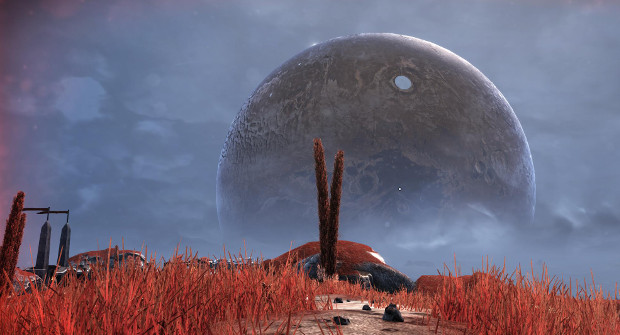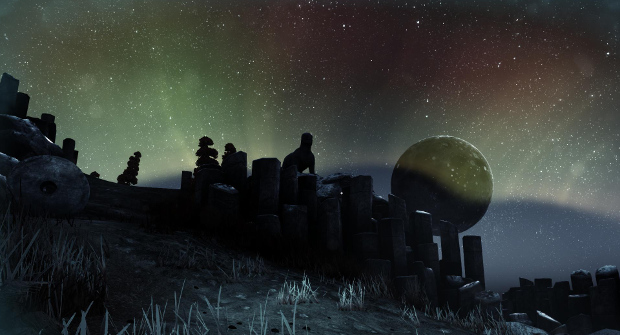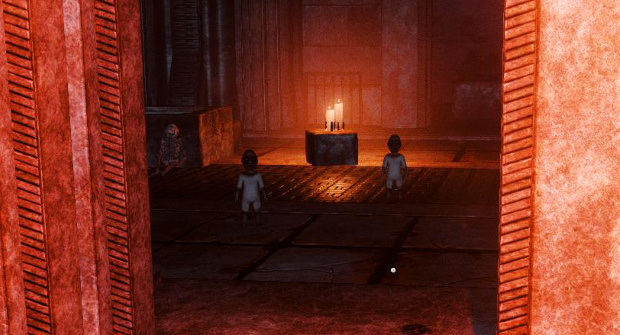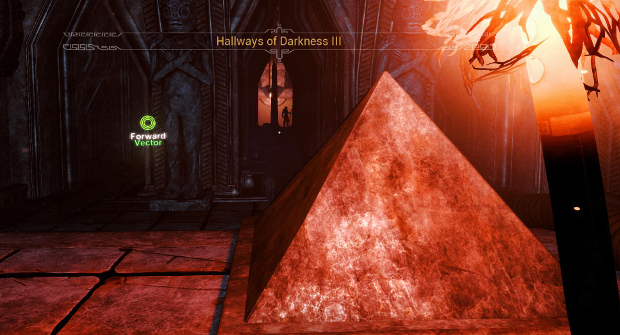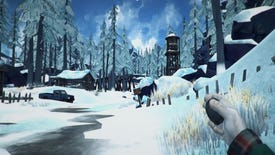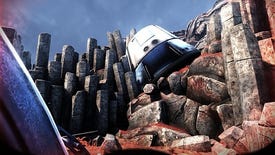Premature Evaluation: The Solus Project
Bad beachfront real estate
Few sci-fi games embrace the menacing strangeness and indifference of the universe as you find it in Kubrick, Tarkovsky, or even Scott's original Alien. Space, and the far future, tend to be familiar analogues to the everyday conflicts we see around us. The aliens are never too alien, and new worlds are never too new.
The Solus Project maroons the player beyond the outskirts of comprehension. It's a survival game with a little more guidance and sense of purpose that you'll find in the million other survival games jostling for attention on Early Access. It's also about a hundred times more polished, which is fitting for a game fast-approaching its full release. But its gorgeous graphics and clever diegetic interface are all in the service of a story of isolation and suspense on a deserted alien world.
The game opens with some expository title cards laying out a pretty typical backstory: Earth was destroyed, and the remnants of humanity are clinging to life aboard a rescue fleet out by Pluto. Your character was sent on an expedition to find humanity a viable new homeworld. Sci-fi fans know such an expedition can only end one way, and so it's not a surprise when something destroys your ship and dumps your character on a rocky alien coast.
What a coast it is. Solus is a straightforward game, but if it starts to soar, it's because it sells the illusion of being lost on a harsh and cryptic alien world in style. A massive, diseased-looking planet rises over the far horizon for much of the day / night cycle, while a smaller moon appears at night. The sky is shot-through with auroras, shooting stars, and occasionally pieces of burning spaceship. In the distance, faint pieces of what could be architecture rise out of distant islands, while the nearby coast is broken up by jagged pillars of what appear to be carved rock. Your PDA tells you that the heat is intense by day, and the cold is bone-deep by night, and the edge of your space helmet visor will start to fog-in as you linger in the cold.
There are two central problems that introduce themselves quickly. First, your character needs to survive on the planet while also get enough equipment up-and-running to get a message back to the human fleet. Second, you need to figure out whether this new planet is safe, considering that the previous occupants appear to have vanished or died.
Those two questions are examined in two distinct types of levels and environments. When you're on the surface, you're visiting crash sites, scavenging equipment, and trying to find bits of shelter, food and warmth to prevent yourself from getting sick. You're also finding preposterously-preserved diary entries from your former crewmates littering the landscape, which reveals an intriguing backstory to your mission, albeit in a clunky fashion.
But when you go underground, into the caves and underground vaults you discover while exploring the surface, you'll find the remnants of an alien civilization, and hints as to why they vanished after transforming their world into a mammoth objet d'art.
Exploration of these two environment types is what The Solus Project is all about, while the survival elements predominantly function as a way to increase the challenge of exploration. Often, this pressure acts as a sort of timer: caught in a driving rainstorm at night, your character is certain to get hypothermia if you don't eventually seek shelter and warmth. Plunge too deep into the caves, and you risk losing your way and exhausting your supply of food and water before you find your way back out.
I love that The Solus Project isn't afraid to let survival fade into the background, unlike so many survival games that never let you forget that you're about to be slightly hungry, or you're about to get too cold, or that every passing second brings you closer to the moment when you will be thirsty once again. The Solus Project wants your mind on other things besides the basic care and maintenance of an imaginary body, and it's very easy to forget that it's a survival game at all… until you realize you're in mortal danger.
An aside: only once in my life have I gotten badly lost. I was in a college, at a retreat with my friends and decided to go for a nice walk through the forest a couple hours before dusk. I knew the surrounding area decently well, and most of the trails I'd seen looped back home within a mile or so. So I hurried into the forest alone, not telling anyone that I was leaving, and without a phone, a knife, or even a lighter. Because it was all perfectly safe, and the woods weren't so very big, and so I wasn't taking a chance at all… until I passed through a section of clear-cut forest and lost the trail without realizing what I'd done until the sun dipped below the trees and a mild early spring day started to give way to a wintry night. And suddenly it dawned on me that I was in actual danger, in a tiny forest that couldn't have measured more than ten or twelve miles across.
I flashed back to that moment in The Solus Project. A cave complex proved longer and deeper than I'd anticipated, and the half-charged solar flashlight that I'd brought with me from the surface started to weaken and dim as the battery ran down and the caves stretched ever onwards into deepening gloom. I could vividly picture my surface-level camp, with its fire, its food supplies, its bottles of water. All of them so far behind me that I'd never make it back. So I pressed forward, using the faint, watery light of my flashlight to navigate.
What that flashlight illuminated — badly — was increasingly disturbing, with some choice moments stolen from other horror games and even shades of Lost and Prometheus. Even as I recognized the influences and tropes that The Solus Project was employing, however, I was still helpless against their profound creepiness.
On the other hand, I wish there were a bit more to The Solus Project than just "wander around and look at stuff". The stuff you're looking at is pretty interesting, and the planet becomes an ever-more menacing and bizarre place. The levels are fun to explore, with loads of hidden passages and collectibles. But there's also a lot of re-treading old ground, taking naps, and re-reading the same notes and tablets before you figure out what you missed.
There's also not much to these levels beyond collecting stuff and delivering it to a destination or a gadget. I'm not sure The Solus Project needs to be a puzzle game, but it could use a little more to do beyond "bring the space-trash to the Macguffin device".
Still, The Solus Project excels as a sci-fi haunted house. A tunnel full of what appears to be teeth is utterly terrifying, while being caught in a meteor shower left me absolutely floored when I realized that the "skybox" was in fact coming straight at me and was starting to explode nearby.
Compared to much of what you'll find on Early Access, The Solus Project is absolutely incredible. It may not be trying to create an entire "alien planet survival sim", but it's definitely doing an effective job of making you feel alone and vulnerable on a planet where nothing seems natural. Whether the mysteries it unveils live up to the setting remain to be seen, but like Lost, The Solus Project succeeds because the journey is so stylish and evocative that wondering about the destination becomes more satisfying than getting there.
The Solus Project is available on Steam for £14.99 / $19.99. My impressions are based on build 1128169 on 29 May 2016.


